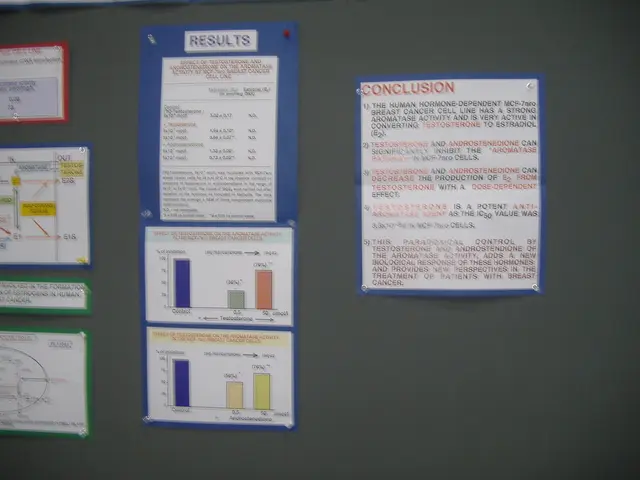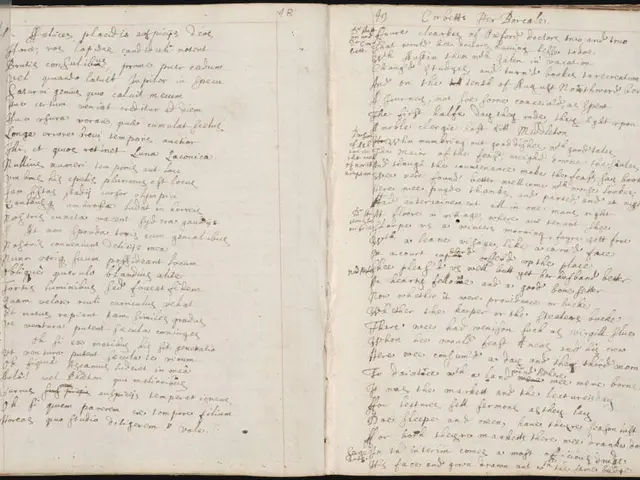Strategy for the Trader's Safe Investments in a Single Instruction
In the world of trading, a key principle that has stood the test of time is the 1% Risk Rule. This strategy, championed by trading legends Larry Hite and Bruce Kovnar in their book 'Market Wizards', serves as a cornerstone for day traders seeking sustainable success.
The 1% Risk Rule dictates that a trader should never risk more than 1% of their total trading capital on any single trade. For instance, if a trader has a $10,000 account, they would risk no more than $100 on a single trade.
But why is this rule so important for long-term trading success?
Firstly, the 1% Risk Rule prevents large losses from wiping out the account. By limiting risk to 1%, no single trade can cause catastrophic damage that jeopardises the trader’s overall capital.
Secondly, the rule manages drawdowns and preserves capital. Even the best strategies experience losing streaks, and keeping risk small ensures these losses don't compound to dangerously large drawdowns. For example, risking 10% per trade could halve the account in just five losses, making recovery very difficult. With 1%, you can survive many losses and keep trading.
Thirdly, the rule enables consistent, rules-based trading. Sticking to the 1% limit enforces discipline and reduces emotional decisions, helping a trader maintain focus and control even in volatile markets.
Fourthly, the rule supports better position sizing and risk-reward planning. Using the 1% rule helps traders calculate appropriate position sizes based on stop-loss levels and optimise the risk-reward ratio, often aiming for a profit target at least 1.5x or 2x the risk.
In essence, the 1% risk rule acts as a crucial risk management tool that promotes longevity and resilience in trading accounts by limiting losses, managing drawdowns, and fostering disciplined, consistent trading behaviour. This is why it is widely recommended by experienced traders for long-term success.
The 1% Risk Rule also helps traders maintain a clear mind during trading. It does not specify a fixed percentage for position sizes; instead, it adjusts them based on the volatility of the trade. The strategy does not aim to maximise profits on every single trade, but rather to ensure long-term profitability through careful risk management.
The method emphasises the importance of exiting a trade when it's clear that it's not going as planned, to minimise losses. This rule does not mean trading with 1% of account capital; it means adjusting stops and position sizes based on the volatility of the trade.
Traders should expect to encounter periods of multiple losing trades, especially in volatile markets or unexpected events. However, the approach suggests that focusing on minimising losses and maximising wins is more effective for long-term trading success than trying to win on every trade.
The 1% Risk Rule applies to stocks, currencies, commodities, options, or future contracts. Its purpose is to eliminate the risk of ruin for a string of losing trades and decrease stress levels.
In summary, the 1% Risk Rule is one of the simplest lessons for ensuring long-term success in trading. By focusing on risk management, traders can protect their existing capital, allowing for continued growth. Losses should typically not exceed 1% of trading capital, but wins can be 2%, 5%, 10%, or more when entering at the right price and a trend takes off. The strategy encourages letting profitable trades run, provided they are still trending positively and supported by the market, to secure larger profits.
The 1% Risk Rule is beneficial for personal-finance and investing, as it promotes the long-term success of trading accounts by limiting losses, managing drawdowns, and fostering disciplined, consistent trading behavior. This rule also enables better position sizing and risk-reward planning, ensuring that each trade does not jeopardize the trader's entire capital. Furthermore, the rule supports a clear mind during trading, as it does not specify a fixed percentage for position sizes and instead adjusts them based on the volatility of the trade.




